Sigma 24mm f1.4 DG DN Art Lens Review L Mount:
If you’re in the market for a wide angle with a large maximum aperture, Sigma has announced two new lenses today: the 20mm f1.4 DG DN Art, and the 24mm f1.4 DG DN Art. Thanks to them, I received both L mount versions of these lenses to test out before their release date, so I can write reviews for them. As the title suggests, this is the review for the Sigma 24mm f1.4 Art, and what I think about it. Here’s the link to the 20mm f1.4 Art review.
Thanks for taking the time to read my review! If it helped, please consider purchasing from any of the links mentioned in this post, which in turn, helps support this site. I get a small commission but it will not cost you anything extra. Thank you!
Sigma 24mm f1.4 DG DN Art Lens Build Quality:
What I want to talk about first is the overall build, which is superb. Like its sibling, the 24mm f1.4 is made of aluminum and Thermally Stable Composite (TSC) materials, so it is a very solid lens that feels great in the hands. There are no creaks, rattles or any signs of inferior workmanship here. There’s also a brass bayonet mount, and the structure of the lens is dust and splash resistant. Furthermore, to help protect the front element of the 24mm from harsh elements, for example, a water and oil repellent coating has been added to it. Overall, the standards here are very high, and this lens is definitely made to handle professional use, which is what we have come to expect from the Sigma Art Series.
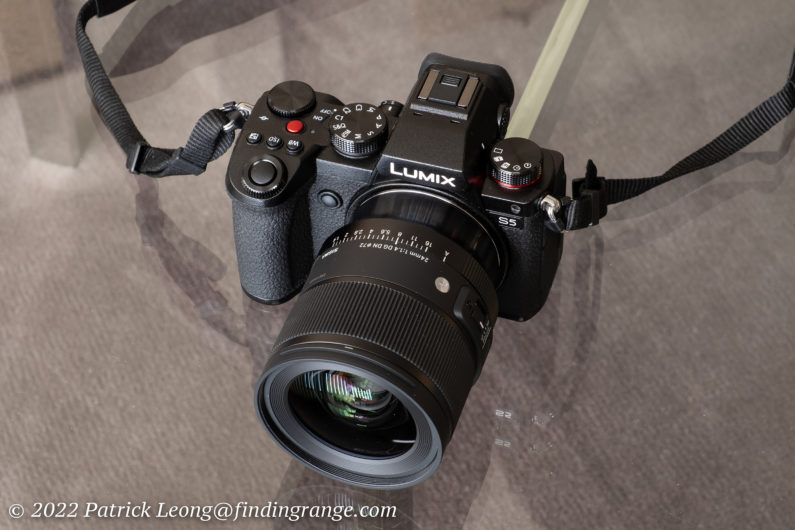
↑ Here’s a photo with the Sigma 24mm f1.4 DG DN Art lens attached to the Panasonic Lumix S5.
There are some great features that I would like to mention as well. For one, there’s an aperture ring, which I love having, and it clicks in third stops. I was a Leica M shooter for many years before I switched over to the SL system, and while I have no regrets, I do miss having an aperture ring sometimes. My Leica SL lenses don’t have one, and it’s great to see one on the Sigma. What’s worth mentioning is that the aperture ring is also de-clickable and lockable. Moreover, there’s a manual focus ring, which is smooth in operation. A rear filter holder is also supplied with the lens, and it can fit sheet-type filter material for different effects. The front of the lens has a 72mm filter thread, and both filters can be used simultaneously, which is great for subjects like astrophotography. On top of all this, there’s an AFL button, and a new Manual Focus Lock (MFL) switch that disables the focus ring, so you can ensure focus never changes.
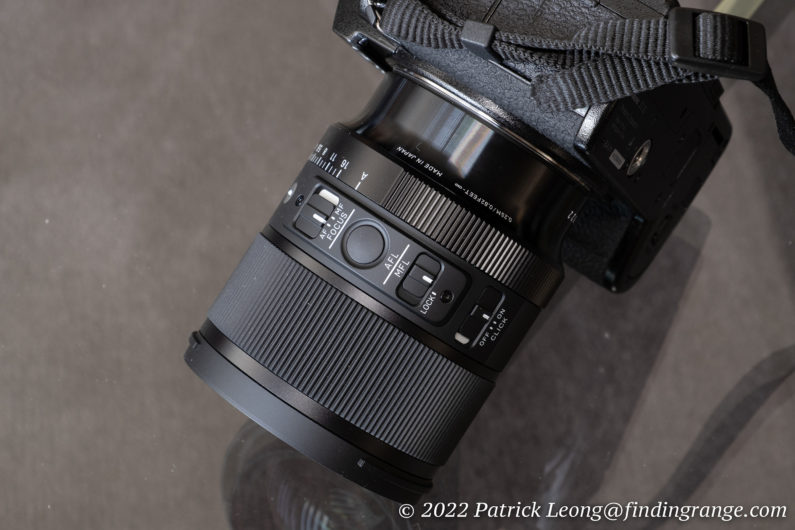
↑ Buttons and switches on the left side of the lens.
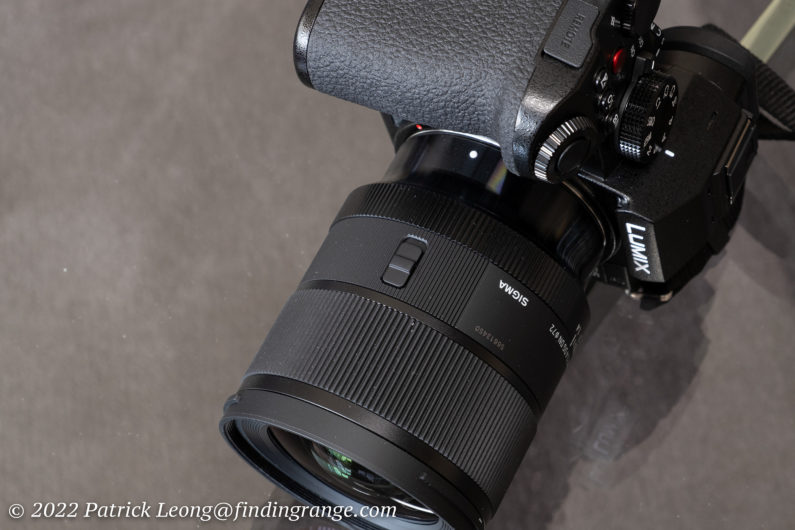
↑ The right also has a switch.
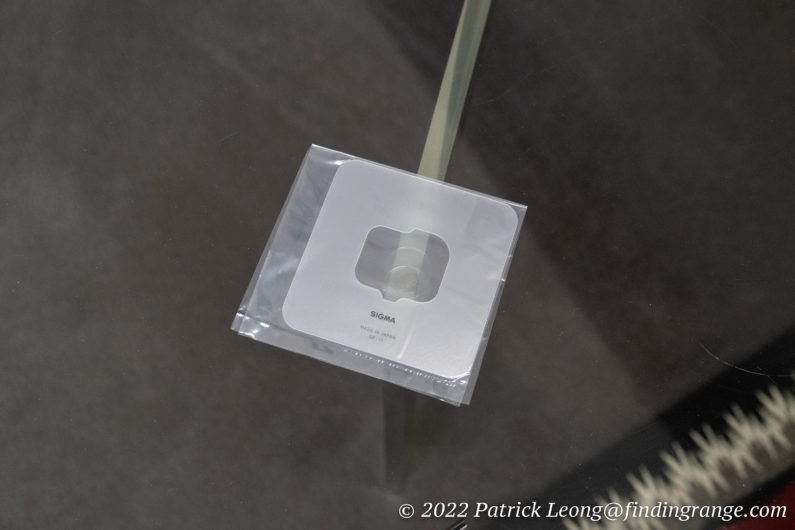
↑ Here’s a photo of the rear filter holder.
In terms of ergonomics, I think Sigma did a great job with the Sigma 24mm f1.4 DG DN Art. It’s compact and light when you take into consideration this is a reference level optic with the build one expects for pro use, while also having autofocus, and a maximum aperture of f1.4. The dimensions for the L mount version are 75.7 x 95.5mm (3 x 3.8 in.), and the weight is 520g (18.3 oz.). It’s not easy to reduce the front element of a wide angle, so the filter thread is still a 72mm as mentioned before. But Sigma was able to make the diameter of the control unit the same as the 35mm f1.4 DG DN Art. Furthermore, the 24mm f1.4 Art, is actually 14mm shorter than the 35mm. As of July 2022, this means the 24mm f1.4 is actually the smallest, and the lightest lens in the f1.4 DG DN Art lineup.
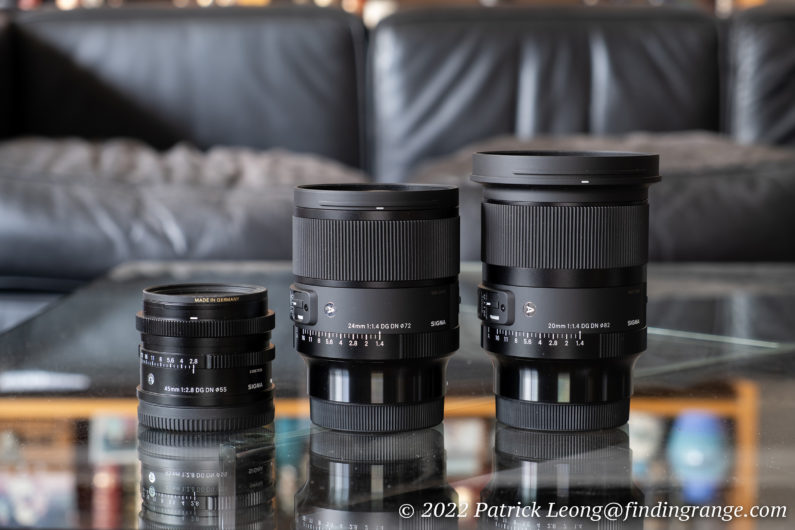
↑ Here’s just a size comparison between my 45mm f2.8 DG DN Contemporary vs. the new 24mm f1.4 DG DN Art vs. the new 20mm f1.4 DG DN Art.
During my time with it, I found it great to carry around all day and use. I reviewed the Sigma 35mm f1.4 Art a while back (review here), and the 24mm feels very similar in terms of handling. It is easy to use, and balanced beautifully while it was attached to my camera. I was testing this lens in the middle of a very hot July too, so it wasn’t easy to carry much of anything. Plus, I was actually carrying the 20mm f1.4 DG DN Art as well. Speaking of, if you want to compare the 24mm to the 20mm in this area, I would say the size difference is noticeable. As you can see, the front is bigger on the 20mm, so in terms of handling, I feel the 24mm wins here.
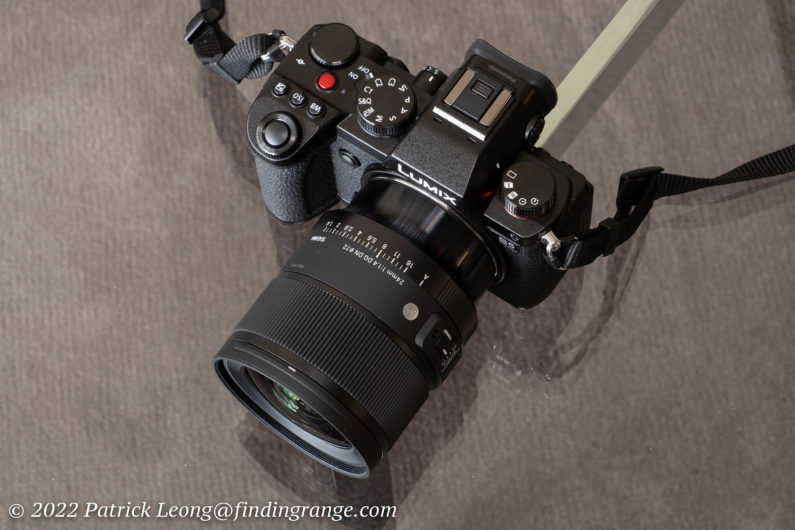
↑ Top view of the 24mm f1.4 DG DN Art.
As for the overall design, it’s understated, which I love, and it matches closely with other f1.4 DG DN Art lenses giving them all a sense of unity in terms of form. For instance, the 24mm f1.4 isn’t littered with anything that isn’t essential. Furthermore, the diameters of the aperture, and focus ring are aligned with those of the 35mm F1.4. Lastly, features like the aperture ring click switch, aperture lock switch, and lens hood with lock button have been retained from the 35mm.
Speaking of lens hood, one is included with the 24mm f1.4. It’s a petal-type lens hood with a locking mechanism, which helps it stay securely on the lens. There’s also a rubber grip area on the lens hood, so it can be easily attached or removed. Lastly, it is reversible for easy storage.
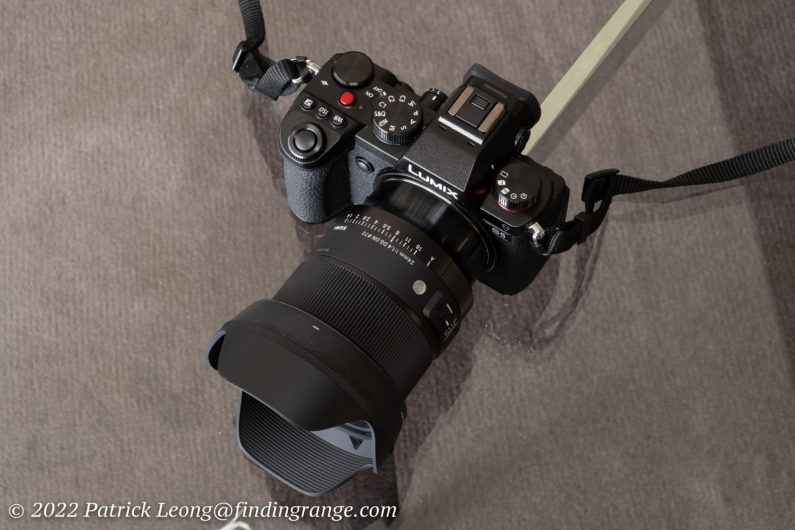
↑ The 20mm f1.4 DG DN Art lens does come with a lens hood.
Sigma 24mm f1.4 DG DN Art Lens Autofocus:
Like the 20mm f1.4, the 24mm f1.4 DG DN Art uses an autofocus system with a stepping motor that works quickly, and effectively to get you razor sharp images. Autofocus will also depend on the camera that is being used but with that said, I didn’t have any issues here. It is fast, efficient, and near silent. Like its sibling, everything is smooth sailing with no drama at all.
Besides being fast, and efficient, I also found the autofocus to be very accurate. This is even more important considering we’re talking about a lens that can produce a very thin depth of field with its f1.4 aperture. Like the 20mm, I took this lens to many different locations with all types of lighting. Overall, I found the autofocus performance to be predictable and very dependable.
Lastly, this lens also has a minimum focus distance of 25cm (9.9 in.), so you can get pretty close to your subject. Grant it, wide angles aren’t used much for macro type photography but if anything, this just adds to the versatility of the 24mm f1.4, and opens you up to more opportunities to be creative. Plus, you can take full advantage of that f1.4 aperture by achieving an even thinner depth of field, since you can get closer to your subject.
Sigma 24mm f1.4 DG DN Art Lens Image Quality:
In terms of image quality, the 24mm f1.4 DG DN Art is just plain out impressive, and in every way, lives up to what we expect from Art Series glass. We’re definitely talking about reference level type optics here. In my opinion, this is one of the best lenses that have come from Sigma so far, and there are several reasons for this.

↑ The settings for this shot were 100 ISO and f8.
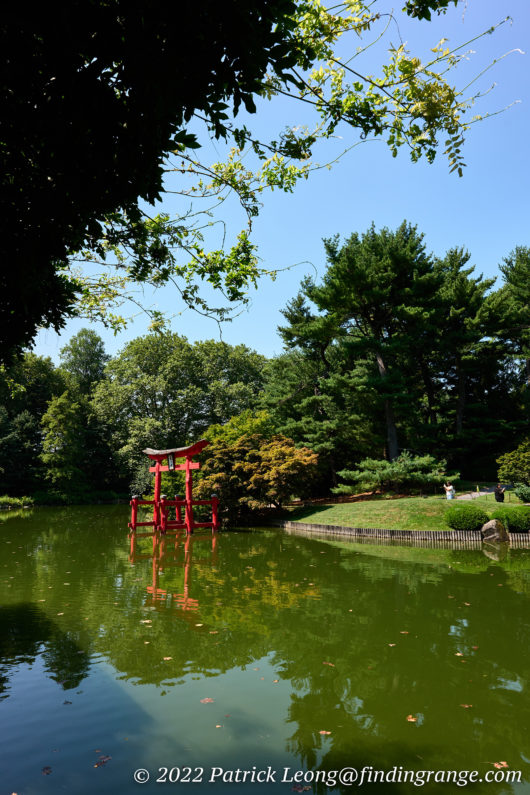
↑ This was taken using 320 ISO and f11.

↑ This was taken using f8 and 640 ISO early in the morning.
For one, this lens is razor sharp. Like the 20mm f1.4, this lens seems to just capture every little detail in a frame. At wide open aperture, center sharpness is excellent with corners and edges not too far behind. Sharpness is pretty uniform through the entire frame at f1.4 in other words. As you stop down, sharpness improves just a bit but like the 20mm f1.4, the 24mm f1.4 can definitely be used throughout the aperture range to produce stellar images. This is the type of lens where you’ll only need to adjust aperture to work with lighting or to change depth of field, not to improve image quality.
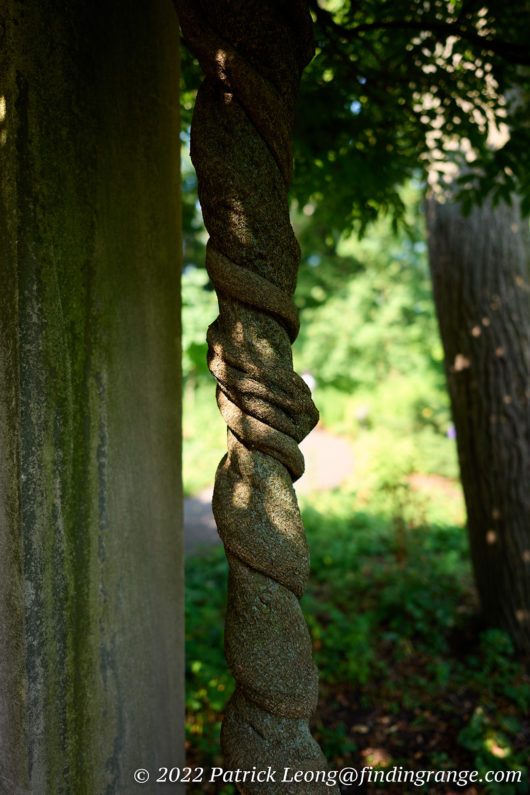
↑ This was taken using f1.4 and 100 ISO.
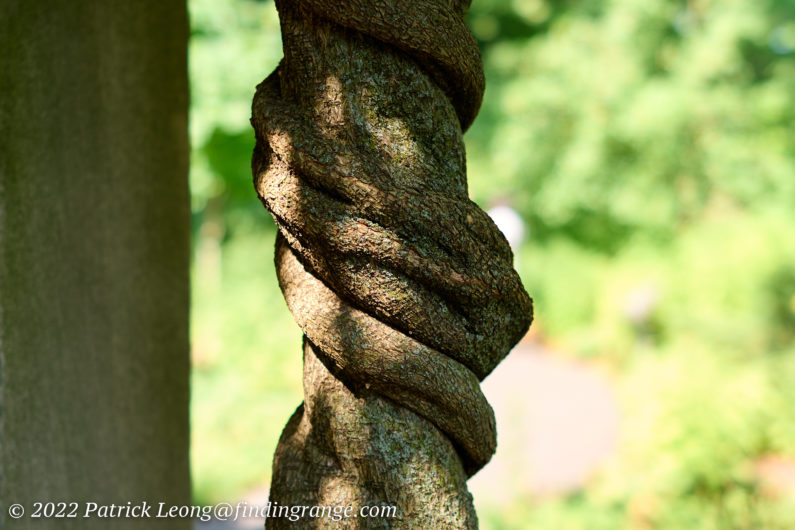
↑ Here’s a 100% crop of the photo above.
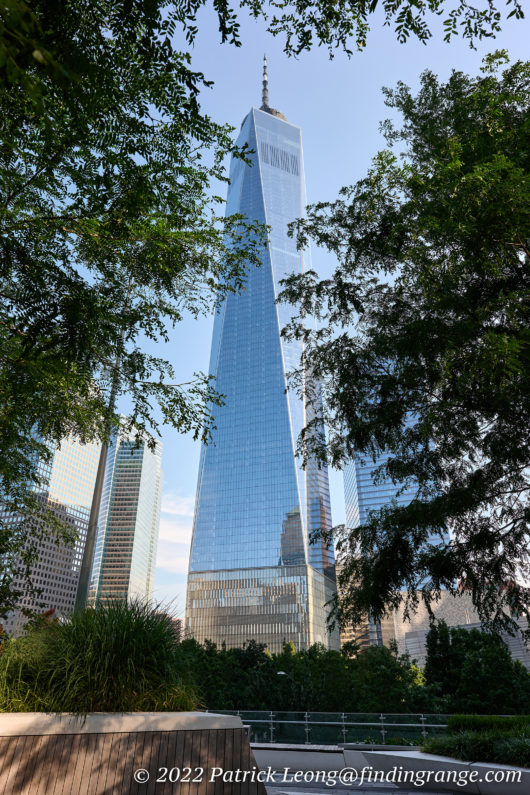
↑ This was taken using f8 and 250 ISO.
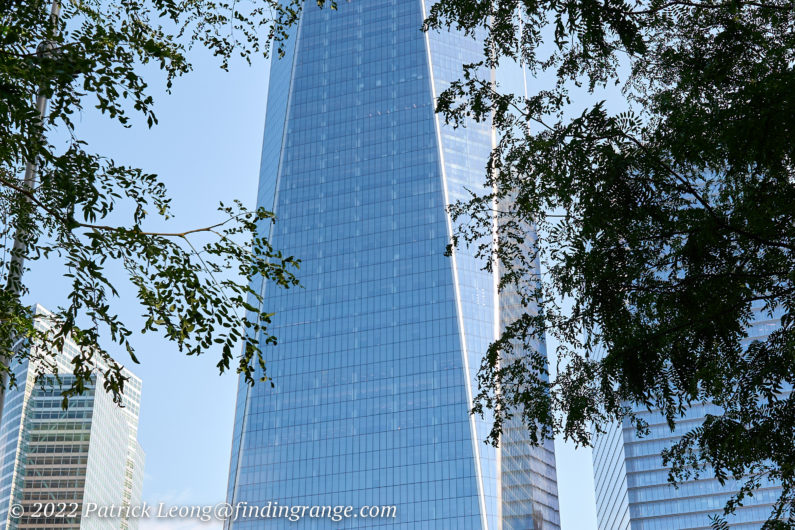
↑ Here’s a 100% crop of the photo above.

↑ Here’s another photo taken using f8. I used 100 ISO.

↑ Here’s a 100% crop of the photo above.
Besides being a very sharp lens, there are other features that make the 24mm f1.4 DG DN Art just a joy to use. There’s nice depth and three dimension in the photos. Color and contrast rendering are great. From what I photographed, the 24mm f1.4 seems highly resistant to flare. Distortion seems well under control. There is some vignetting at wide open aperture, but this isn’t out of the ordinary for this kind of a lens. By stopping down just one stop, vignetting is significantly reduced. By f2.8, it is nearly all gone. Overall, this is just a fantastic piece of glass that really produces superb images. It’s difficult to find much fault, if you ask me.
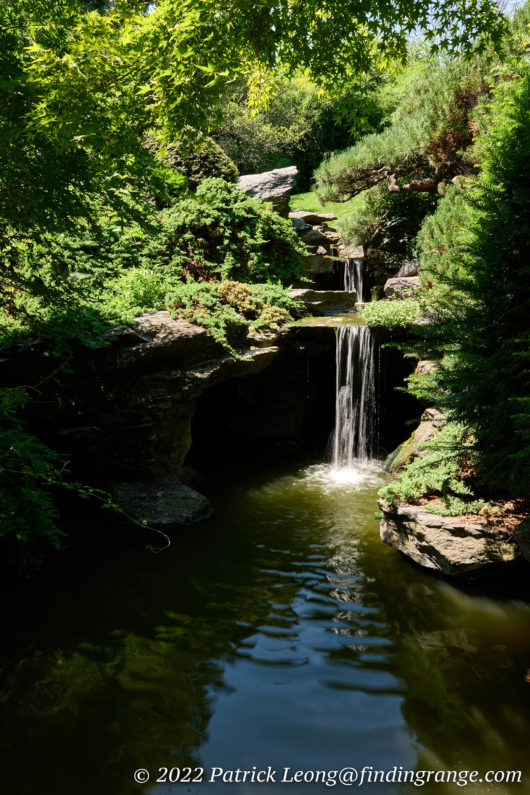
↑ I wanted a long exposure shot here so I took this hand held at 1/10s. The settings were f16 and 100 ISO.

↑ Here’s one taken using wide open aperture and 100 ISO.
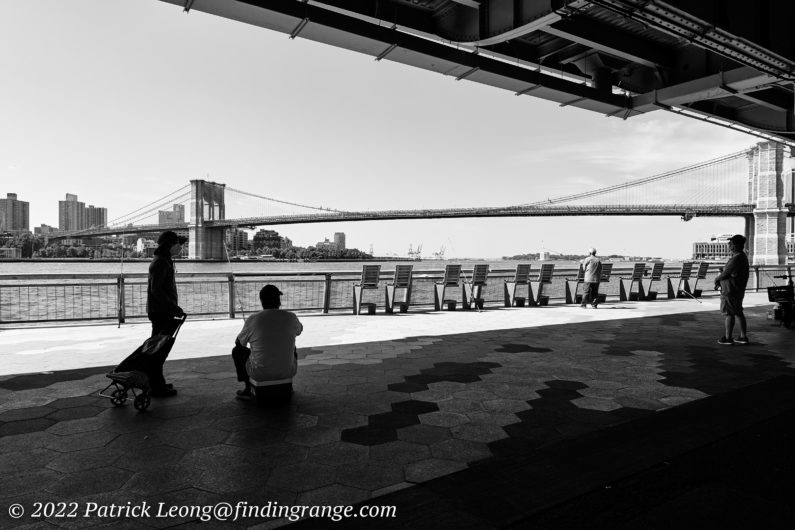
↑ This photo was taken with 125 ISO using f8.
Sigma 24mm f1.4 DG DN Art Lens Bokeh:
As for achieving a shallow depth of field, it is not always easy with any wide angle lens. However, when you do achieve it with the 24mm f1.4 DG DN Art, you are greeted with images that have such smooth, and velvety-like bokeh. Nothing in the background is harsh or sticks out. There are no distractions; all you get is a smooth looking background that also looks natural, and contrasts nicely with the sharpness of the subject.

↑ This photo was taken with wide open aperture and 100 ISO.
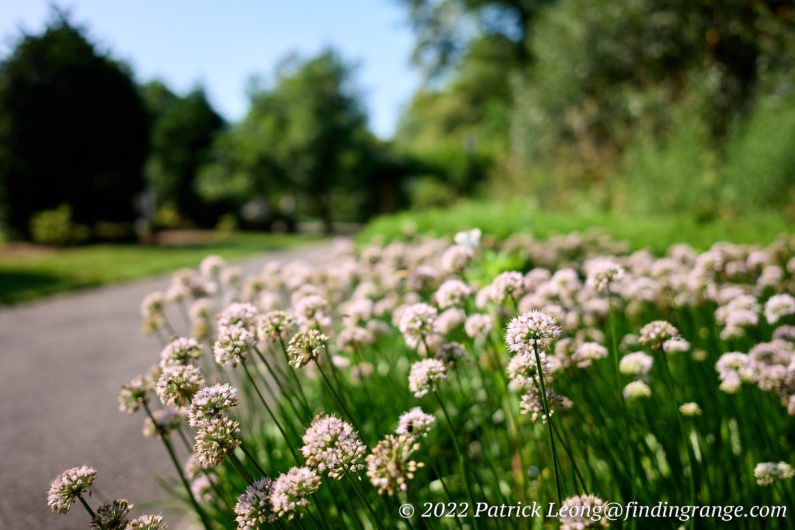
↑ Here’s another with the same settings as above.
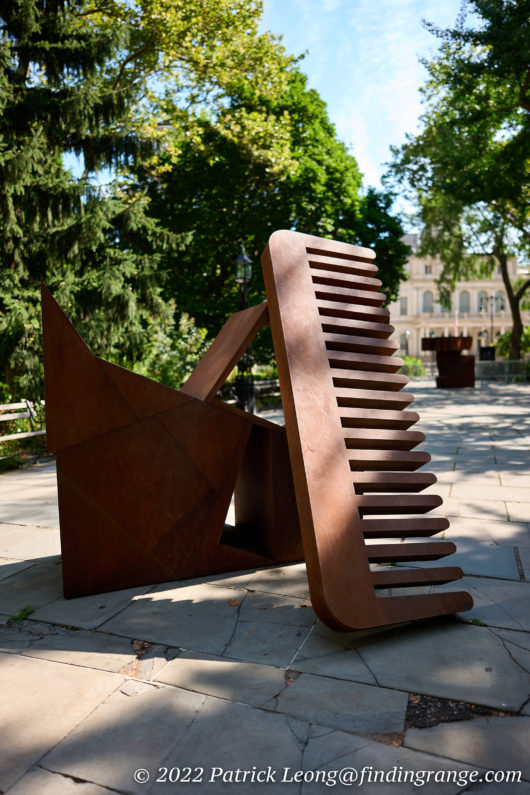
↑ Here’s one more with the same settings as above.
Pros And Cons:
Pros:
- Excellent build.
- Weather and dust sealed.
- Compact and light for this type of lens.
- Great autofocus.
- Superb image quality.
- Fantastic bokeh when you can achieve it.
- Price is good.
Cons:
- While size is kept down to a minimum, if you don’t need the f1.4 aperture, the more compact 24mm f2 DG DN Contemporary might be another option to consider (review here).
Sigma 24mm f1.4 DG DN Art Lens Verdict:
The Sigma 24mm f1.4 DG DN Art is an impressive piece of glass that, in my opinion, is one of the best to come from Sigma so far. It’s built to handle the needs of professionals, it has great autofocus, and the image quality is downright, breathtakingly good. The icing on the cake is that the 24mm retails for just $799. There’s quite a lot here that you’re getting for that price.
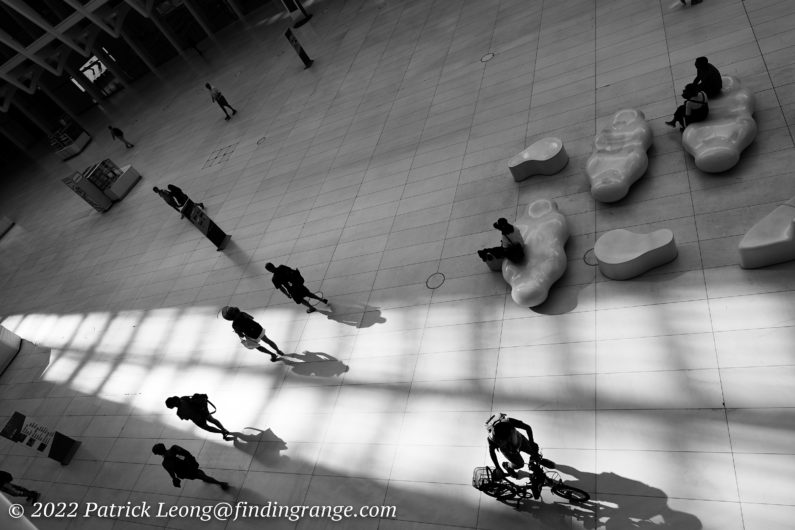
↑ This was taken inside the Oculus with f5 an 160 ISO.

↑ Here’s another I took inside the Oculus. The settings were f5.6 and 250 ISO.
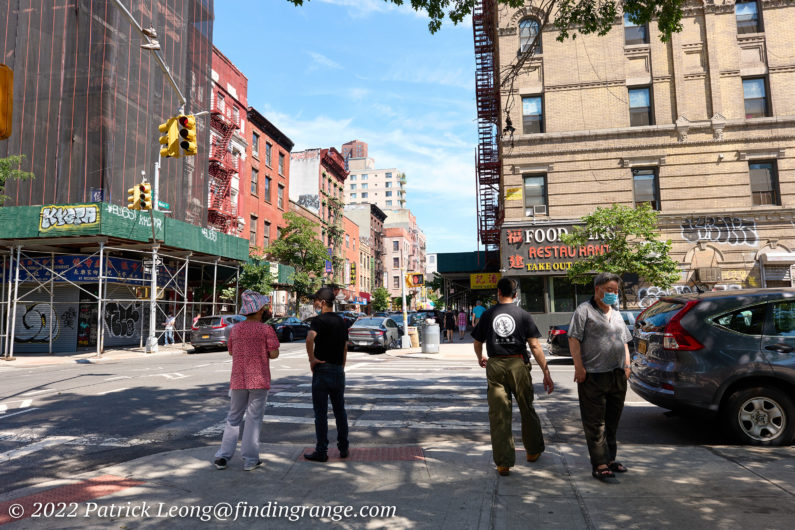
↑ This was taken using f8 and 200 ISO.
I think the only reason I would be hesitant in purchasing this lens, if I were in the market for a wide angle, is because I wouldn’t be able to decide between it and the 20mm f1.4 DG DN Art. I don’t ever scientifically test bench the gear I review. I just take it out and shoot with it all. To me, both these lenses are pretty much equal in terms of awesomeness, and I would probably want both haha :). If I couldn’t pick both, I think I would lean more towards the 24mm. If you asked me this 10 years ago, I would 100% say the 20mm because I just love what an ultra wide can do, especially for landscapes. However, my shooting style has changed over the years, and so has my subject matter. The 24mm would just be better for me when I do my fashion type shoots. I also found it easier to use in the city.
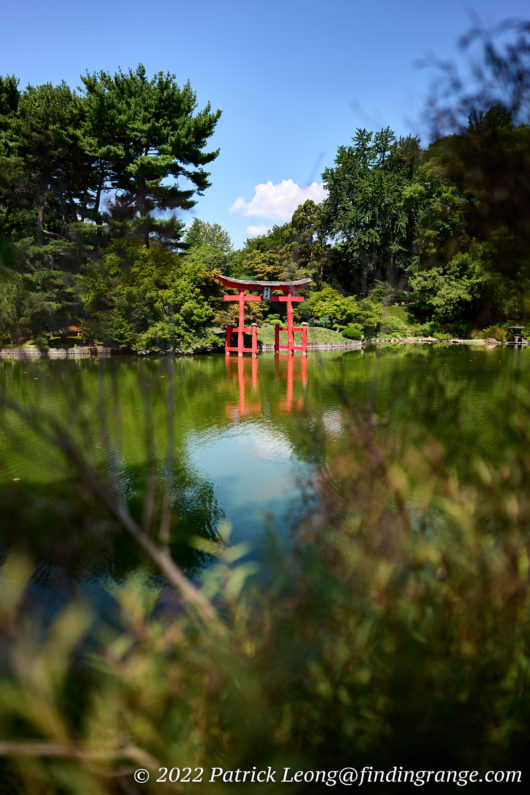
↑ This photo was taken using f1.4 and 100 ISO.
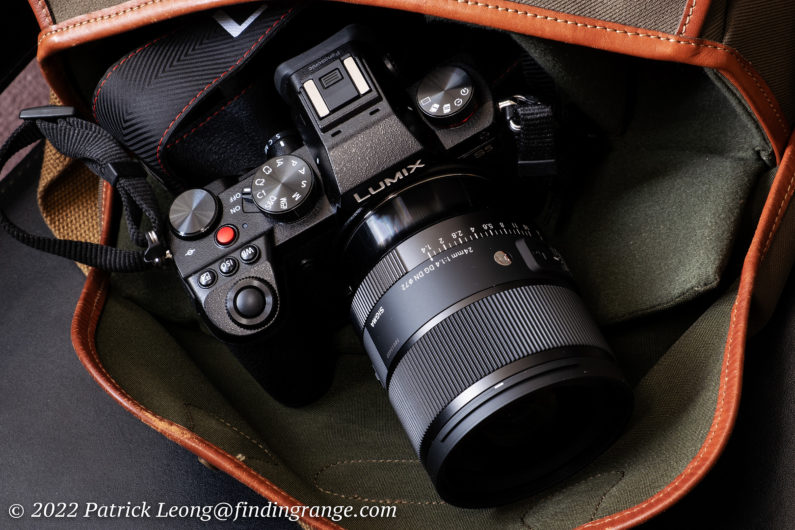
↑ Here’s one last photo of the Sigma 24mm f1.4 DG DN Art with the Panasonic Lumix S5.
Bottom line is, if you’re looking for a fast aperture wide angle lens, the 24mm f1.4 DG DN Art should definitely be at the top of your list of lenses to buy. I highly recommend it, and as I said, I feel this is one of the best lenses from Sigma currently out.
Thanks for taking the time to read my review! If it helped, please consider purchasing from any of the links mentioned in this post, which in turn, helps support this site. I get a small commission but it will not cost you anything extra. Thank you!
Sigma 24mm f1.4 DG DN Art at B&H Photo

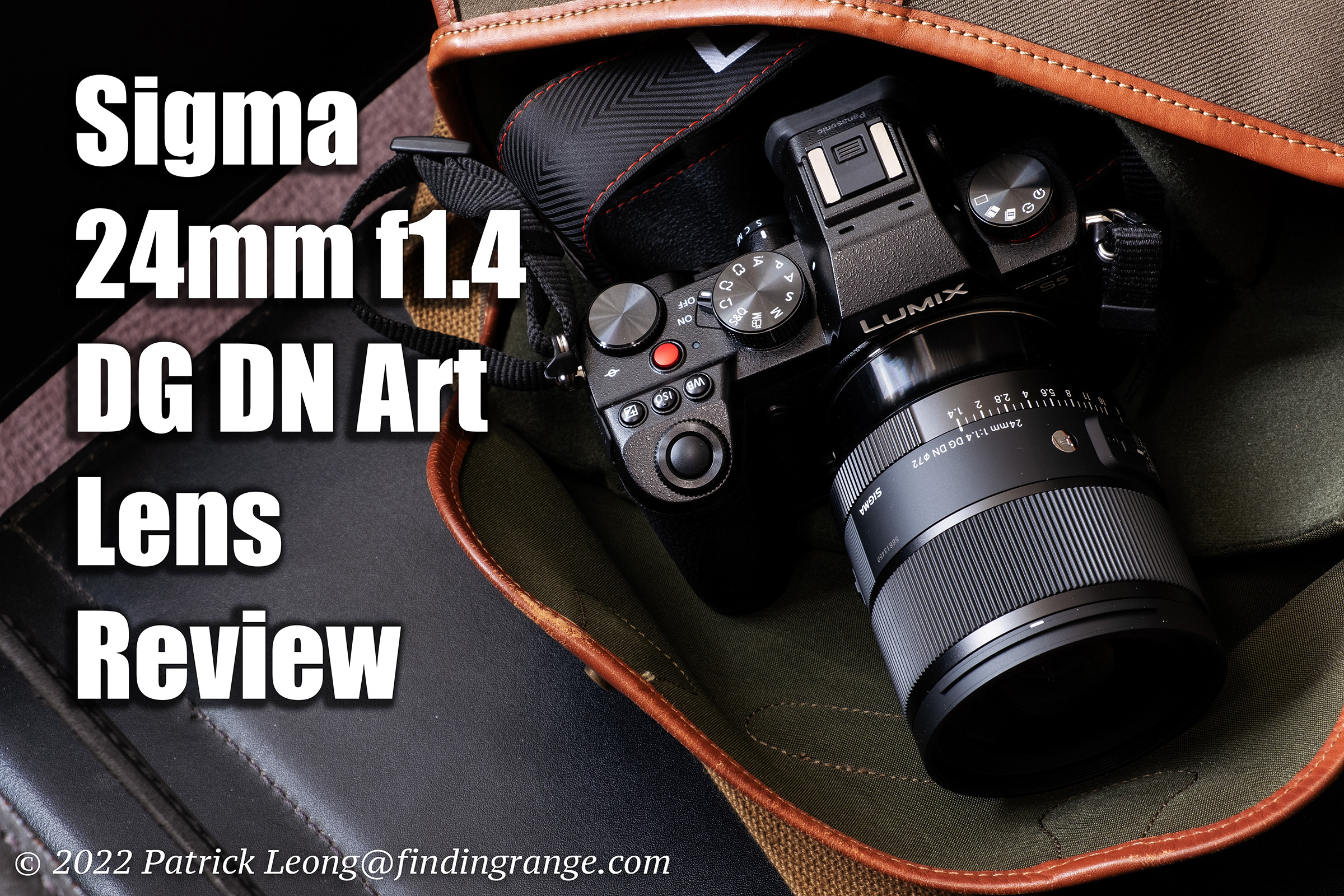
Hi Patrick, your reviews of the new 24/1.4 and 20/1.4 convinces me that a new dg dn 28/1.4 is coming. It will be smaller than the current one!
Hi Brian,
I am hoping for a new 105mm f1.4 lol. It would be awesome, if they came out with a dg dn version. I hope you’re enjoying the summer buddy!
Best,
Patrick